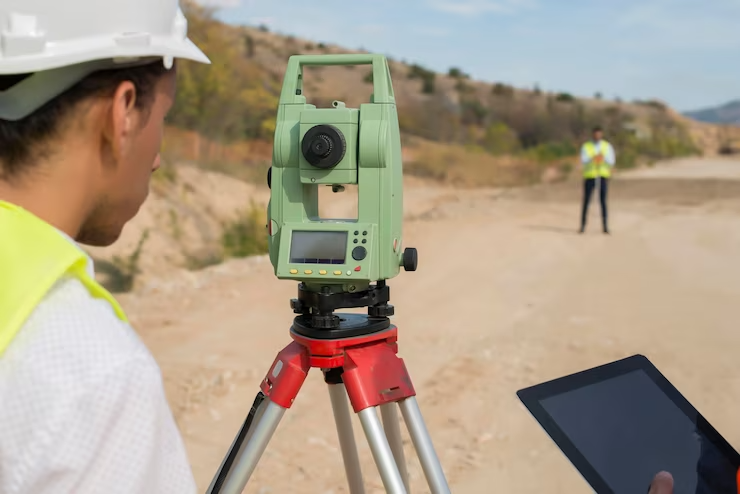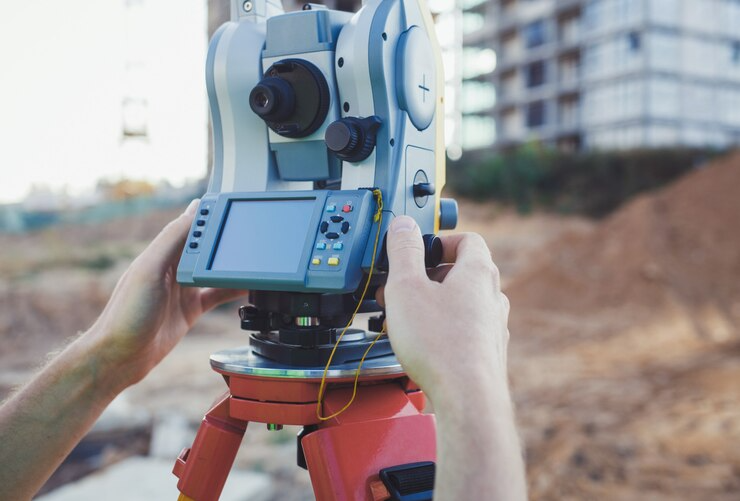The field of Land surveying has encountered a huge change in many years because of the presentation of current advances or modern technologies like GPS, 3D laser filtering, ethereal symbolism utilizing robots or planes, mechanical complete stations, and high-level programming. These advancements have made land surveyors undeniably more proficient, precise, and fit for social occasions with more nitty-gritty spatial information about framework and topography.
The Role of Modern Technology in Land Surveying That Helps Professional Land Surveyors

GPS Technology
Global positioning systems (GPS) may have been the most significant technological development for land surveying. An assessor can precisely plan limits, framework areas, rise focuses, and other huge spatial information with the assistance of handheld GPS gadgets, which can pinpoint an assessor’s exact geographic directions. GPS makes surveying work significantly faster, as survey crews no longer need to employ traditional sighting and measurement techniques to trace out parcel boundaries and mark critical points. GPS surveying is highly efficient modern technology over any terrain and in remote areas.
With real-time kinematic (RTK) GPS, land surveyors can achieve centimeter-level precision in their coordinate data. RTK uses a fixed base station receiver and roving unit to get correction signals that account for atmospheric interference and other factors that create minor inaccuracies.
3D Laser Scanning
Also known as LIDAR, 3D laser scanning is an emerging tech-based surveying technique that uses millions of laser light pulses to create detailed 3D models and point clouds of infrastructure, topography, boundary features, and more. Specialized LIDAR equipment uses these light pulses to take measurement readings and capture spatial data far denser and more comprehensive than what a surveying crew could gather with traditional methods.
This innovation computerizes the information-gathering process, passing it on to the land surveyor to direct the hardware. The gigantic datasets gathered can then be incorporated with different sources like robot symbolism to make exact 3D representations. Engineers, sketchers, improvement groups, and various accomplices can utilize these portrayals.
Drone Aerial Imagery
Thanks to advancements in drone modern technology over the past decade, land surveyors now have access to accurate low-altitude aerial imagery that shows updated views of geography, structures, construction sites, and any land use. Land Surveyors can observe and analyze features that are difficult to inspect from ground level with the assistance of high-resolution drone images.
This higher point of view gives a priceless visual setting. Drone flights are automated to capture images across a specified area efficiently. Orthorectified imagery that corrects distortions can be used with survey data and 3D models to give highly detailed site representations. These land surveyors furnish clients and public offices with the most recent site infrastructure data.
Robotic Total Stations
Robotic total stations are advanced measurement instruments that can be self-level, scan entire environments, track prism targets, and collect abundant positional data without a survey crew present. These mechanical gadgets utilize an electronic distance meter, installed programming, and mechanized engines to check designs, territory, and focal points that have intelligent crystals put on them across a 360-degree field of view.
This modern technology automates the data-gathering process even more than standard total stations. One surveyor can monitor readings remotely while the total station assembles spatial data autonomously, which recuperates critical fieldwork hours.

Survey Software
Modern land survey data is now stored and managed in specialized CAD, GIS, and mapping software that can process massive point clouds, high-resolution drone images, GPS data, robotic total station datasets, and more. The survey software assists land surveyors with coordinating different datasets to bring together 3D perceptions, geological guides, limit maps, framework plans, and insightful reports.
The advanced processing power and data editing tools transform land surveys into information-rich 3D models that end clients use to make development plans. Land Surveyors can likewise give nitty gritty examinations and experiences given the quality datasets. The compilation and representation of data are accurate thanks to these systems.
Conclusion: The Impact of Modern Technology
Land Surveying Modern technology has given professional land surveyors game-changing field capacities and data handling power, from exact GPS directions to extensive 3D displaying. Surveying work that once required large crews for weeks or months to gather can now be completed by small teams in days thanks to tech-based productivity gains. The definite information and representations now accessible are priceless for framework arranging and advancement across private and public area projects. Pushing ahead, headways like cell phone-based field applications, man-made intelligence handling, and increased reality will just grow the studying prospects.
